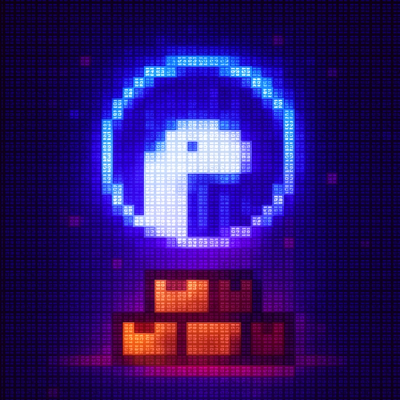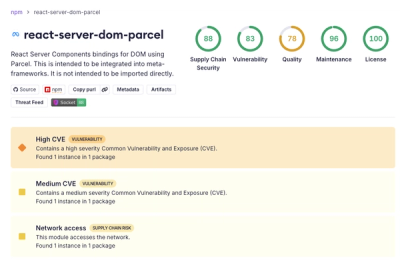End to End Testing Environment
A reusable and extendable E2E testing environment for WooCommerce extensions.
Installation
npm install @woocommerce/e2e-environment --save
npm install jest --global
Version 0.3.0 and newer
Version 0.3.0 added a test installer that will populate the tests/e2e/* folder with test scripts and configuration files. The installer will create test scripts for E2E test packages that include support for the installer.
Using the installer
- Install a default test environment:
npx wc-e2e install
- Install test specs from an E2E tests package:
npx wc-e2e install @woocommerce-e2e-tests [--format cjs] [--ext spec.js]
- The default test spec format and extension are
ES6 and test.js
- Remove test specs for an E2E tests package:
npx wc-e2e uninstall @woocommerce-e2e-tests
Configuration
The @woocommerce/e2e-environment package exports configuration objects that can be consumed in JavaScript config files in your project. Additionally, it includes a basic hosting container for running tests and includes instructions for creating your Travis CI setup.
Babel Config
Make sure you npm install @babel/preset-env --save if you have not already done so. Afterwards, extend your project's babel.config.js to contain the expected presets for E2E testing.
const { useE2EBabelConfig } = require( '@woocommerce/e2e-environment' );
module.exports = function( api ) {
api.cache( true );
return useE2EBabelConfig( {
presets: [
'@wordpress/babel-preset-default',
],
} );
};
ES Lint Config
The E2E environment uses Puppeteer for headless browser testing, which uses certain globals variables. Avoid ES Lint errors by extending the config.
const { useE2EEsLintConfig } = require( '@woocommerce/e2e-environment' );
module.exports = useE2EEsLintConfig( {
root: true,
env: {
browser: true,
es6: true,
node: true
},
globals: {
wp: true,
wpApiSettings: true,
wcSettings: true,
es6: true
},
} );
Jest Config
The E2E environment uses Jest as a test runner. Extending the base config is necessary in order for Jest to run your project's test files.
const path = require( 'path' );
const { useE2EJestConfig, resolveLocalE2ePath } = require( '@woocommerce/e2e-environment' );
const jestConfig = useE2EJestConfig( {
roots: [ resolveLocalE2ePath( 'specs' ) ],
} );
module.exports = jestConfig;
NOTE: Your project's Jest config file is: tests/e2e/config/jest.config.js.
The Jest Object
The E2E environment has the following methods to let us control Jest's overall behavior.
setupJestRetries | retries | Sets the amount of retries on failed tests |
NOTE: The amount of times failed tests are retried can also be set using the E2E_RETRY_TIMES environment variable when executing tests. This can be done using the command below:
E2E_RETRY_TIMES=2 pnpx wc-e2e test:e2e
Test Screenshots
The test sequencer provides a screenshot function for test failures. To enable screenshots on test failure use
WC_E2E_SCREENSHOTS=1 npx wc-e2e test:e2e
To take adhoc in test screenshots use
await takeScreenshotFor( 'name of current step' );
Screenshots will be saved to tests/e2e/screenshots. This folder is cleared at the beginning of each test run.
Test results
The test results are saved in json format in tests/e2e/test-results.json.
Override default test timeout
To override the default timeout for the tests, you can use the DEFAULT_TIMEOUT_OVERRIDE flag and pass in a maximum timeout in milliseconds. For example, you can pass it in when running the tests from the command line:
DEFAULT_TIMEOUT_OVERRIDE=35000 npx wc-e2e test:e2e
This value will override the default Jest timeout as well as pass the timeout to the following Puppeteer methods:
- page.setDefaultTimeout();
- page.setDefaultNavigationTimeout();
For a list of the methods that the above timeout affects, please see the Puppeteer documentation for page.setDefaultTimeout() and page.setDefaultNavigationTimeout for more information.
Test Against Previous WordPress Versions
You can use the LATEST_WP_VERSION_MINUS flag to determine how many versions back from the current WordPress version to use in the Docker environment. This is calculated from the current WordPress version minus the set value. For example, if LATEST_WP_VERSION_MINUS is set to 1, it will calculate the current WordPress version minus one, and use that for the WordPress Docker container.
For example, you could run the following command:
LATEST_WP_VERSION_MINUS=2 npx wc-e2e docker:up
In this example, if the current WordPress version is 6.0, this will go two versions back and use the WordPress 5.8 Docker image for the tests.
Jest Puppeteer Config
The test sequencer uses the following default Puppeteer configuration:
puppeteerConfig = {
launch: {
browserContext: 'incognito',
},
};
puppeteerConfig = {
launch: {
...jestPuppeteerConfig.launch,
ignoreHTTPSErrors: true,
headless: false,
args: [ '--window-size=1920,1080', '--user-agent=chrome' ],
devtools: true,
defaultViewport: {
width: 1280,
height: 800,
},
},
};
You can customize the configuration in config/jest-puppeteer.config.js
const { useE2EJestPuppeteerConfig } = require( '@woocommerce/e2e-environment' );
const puppeteerConfig = useE2EJestPuppeteerConfig( {
launch: {
headless: false,
}
} );
module.exports = puppeteerConfig;
Jest Setup
Jest provides setup and teardown functions similar to PHPUnit. The default setup and teardown is in src/setup/jest.setup.js. Additional setup and teardown functions can be added to tests/e2e/config/jest.setup.js
Console filtering
Added version 0.2.3
By default, messages logged to the console are included in the test results. The test runner suppresses 404 not found and proxy connection messages.
Pages that you are testing may contain repetitive console output that you expect. Use addConsoleSuppression in your jest setup script to filter these repetitive messages:
addConsoleSuppression( 'suppress this after the first instance' );
addConsoleSuppression( 'suppress this completely', false );
Console suppressions can be removed with removeConsoleSuppression. The searchString parameter needs to match the addConsoleSuppression parameter:
removeConsoleSuppression( 'suppress this after the first instance' );
Container Setup
Depending on the project and testing scenario, the built in testing environment container might not be the best solution for testing. This could be local testing where there is already a testing container, a repository that isn't a plugin or theme and there are multiple folders mapped into the container, or similar. The e2e-environment test runner supports using either the built in container or an external container. See the appropriate readme for details:
Slackbot Setup
The test runner has support for posting a message and screenshot to a Slack channel when there is an error in a test. It currently supports both Travis CI and Github actions.
To implement the Slackbot in your CI:
- Create a Slackbot App
- Give the app the following permissions:
channels:joinchat:writefiles:writeincoming-webhook
- Add the app to your channel
- Invite the Slack app user to your channel
/invite @your-slackbot-user
- In your CI environment
- Add the environment variable
WC_E2E_SCREENSHOTS=1
- Add your app Oauth token to a CI secret
E2E_SLACK_TOKEN
- Add the Slack channel name (without the #) to a CI secret
E2E_SLACK_CHANNEL
- Add the secrets to the test run using the same variable names
To test your setup, create a pull request that triggers an error in the E2E tests.
Plugin functions
Depending on the testing scenario, you may wish to upload a plugin that can be used in the tests from a remote location.
To download a zip file, you can use getRemotePluginZip( fileUrl ) to get the remote zip. This returns the filepath of the location where the zip file was downloaded to. For example, you could use this method to download the latest nightly version of WooCommerce:
const pluginZipUrl = 'https://github.com/woocommerce/woocommerce/releases/download/nightly/woocommerce-trunk-nightly.zip';
await getRemotePluginZip( pluginZipUrl );
The above method also makes use of the following utility methods which can also be used:
checkNestedZip( zipFilePath, savePath ) used to check a plugin zip file for any nested zip files. If one is found, it is extracted. Returns the path where the zip file is located.downloadZip( fileUrl, downloadPath ) can be used to directly download a plugin zip file from a remote location to the provided path.
Get the latest released zip URL
If you would like to get the latest release zip URL, which can be used in the methods mentioned above, you can use the following helper function to do so:
getLatestReleaseZipUrl( repository, authorizationToken, getPrerelease, perPage )
This will return a string with the latest release URL. Optionally, you can use the getPrerelease boolean flag, which defaults to false, on whether or not to get a prerelease instead. The perPage flag can be used to return more results when getting the list of releases. The default value is 3. If the repository requires authorization to access, the authorization token can be passed in to the authorizationToken argument.
Additional information
Refer to @woocommerce/e2e-core-tests for some test examples, and plugins/woocommerce/tests/e2e for general information on e2e tests.



